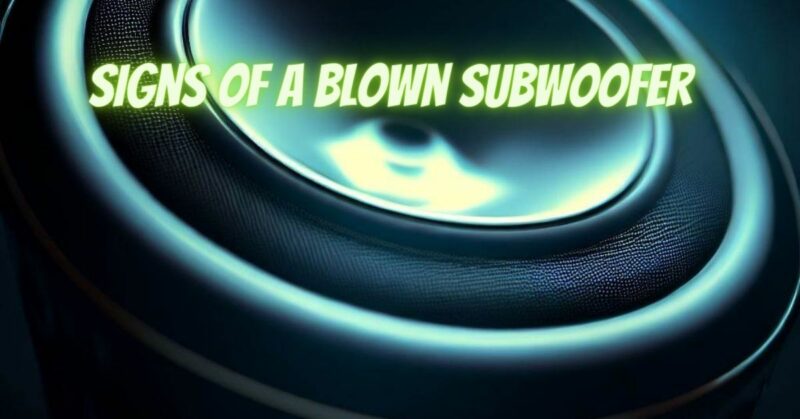A subwoofer is an essential component of a sound system, responsible for reproducing deep, low-frequency bass. However, like any speaker, a subwoofer is susceptible to damage. Understanding the signs of a blown subwoofer can help you diagnose and address the issue promptly, ensuring optimal audio performance. In this article, we will explore common indicators that may suggest your subwoofer is blown and provide you with insights to help you assess the situation.
- Distorted or Muffled Sound:
One of the primary signs of a blown subwoofer is distorted or muffled sound. If you notice that the bass output sounds unclear, fuzzy, or lacks definition, it could be an indication of a damaged subwoofer cone or voice coil.
- No Sound Output:
If your subwoofer produces no sound at all, even when the audio system is powered on and the volume is turned up, it may be a clear sign of a blown subwoofer. This could be due to a severed connection, damaged wiring, or a faulty internal component.
- Rattling or Vibrating Noises:
A blown subwoofer may produce rattling or vibrating noises when playing audio. These sounds often occur when the subwoofer’s internal components, such as the cone or voice coil, are damaged or loose, causing unwanted vibrations.
- Overheating:
Another sign of a blown subwoofer is excessive heat. If the subwoofer feels excessively hot to the touch during normal operation, it could indicate a malfunctioning component or an electrical issue that requires attention.
- Smoke or Burning Smell:
In severe cases, a blown subwoofer may emit smoke or a burning smell. This suggests a critical failure within the subwoofer’s components, such as a burnt voice coil or wiring. In such situations, immediate action is required to prevent further damage or potential hazards.
- Low or No Resistance:
Using a multimeter, you can measure the resistance of the subwoofer’s voice coil. A blown subwoofer may exhibit low or no resistance, indicating a break or short in the coil, preventing proper operation.
- Visual Inspection:
Physically inspect the subwoofer for any visible signs of damage, such as tears, punctures, or sagging in the cone, or loose connections and wires. These visual cues can help identify potential issues that may lead to a blown subwoofer.
Conclusion:
Recognizing the signs of a blown subwoofer is crucial for maintaining the performance and longevity of your audio system. Whether it’s distorted sound, no sound output, rattling noises, overheating, smoke, low resistance, or visible damage, paying attention to these indicators can help you diagnose and address the issue promptly. If you suspect your subwoofer is blown, it’s advisable to consult a professional audio technician or contact the manufacturer’s customer support for guidance on repair or replacement options. By taking appropriate action, you can restore the full, powerful bass experience to your audio setup and continue enjoying immersive sound quality.


